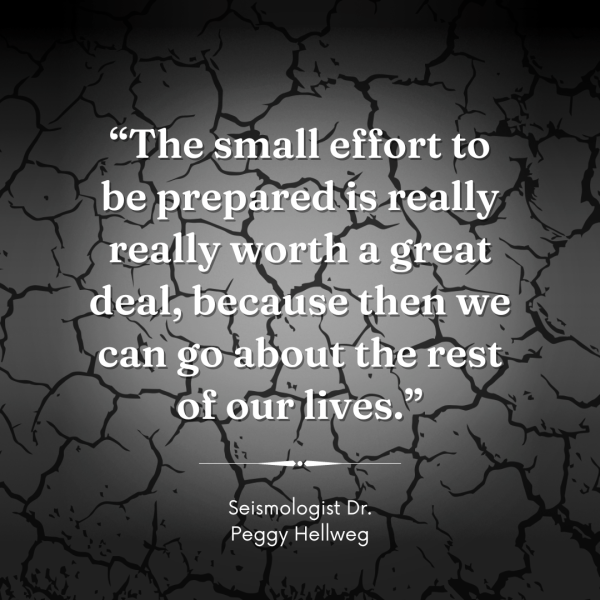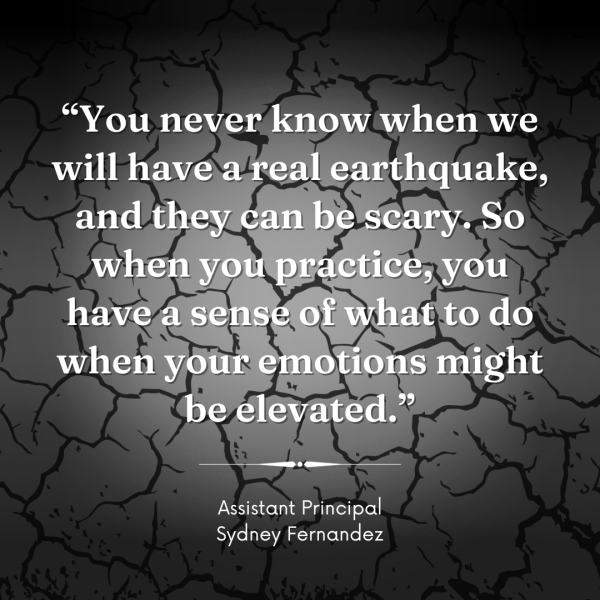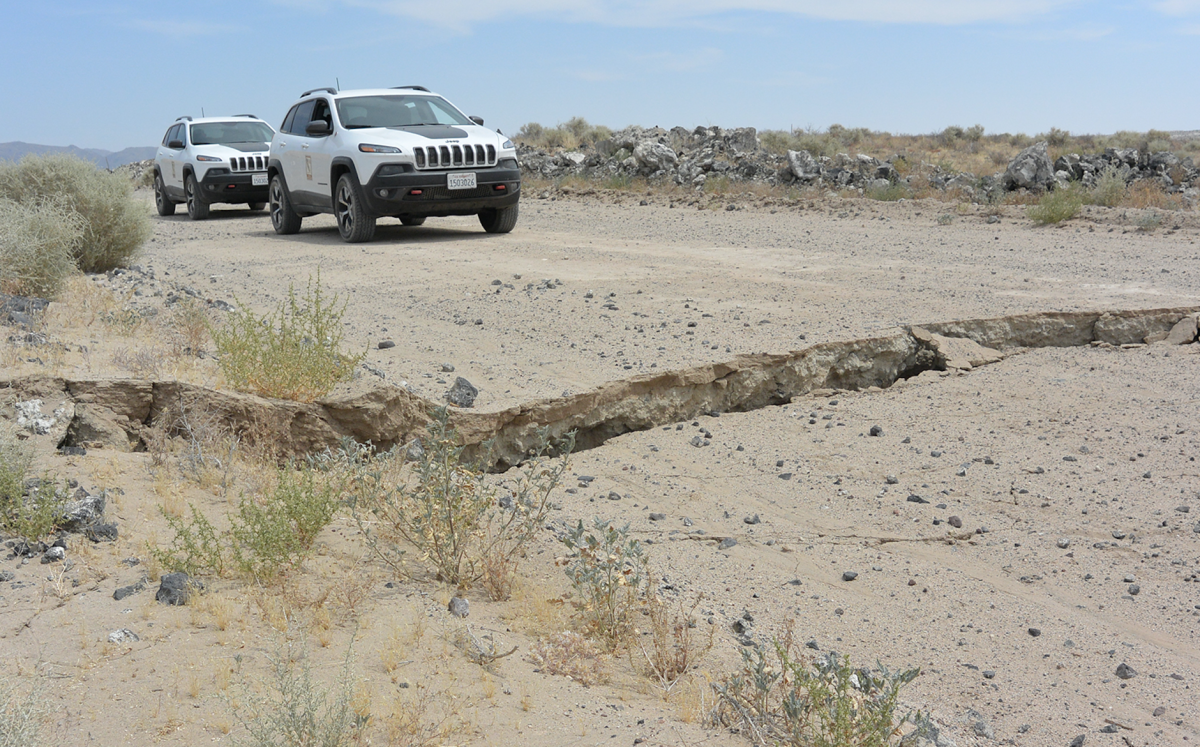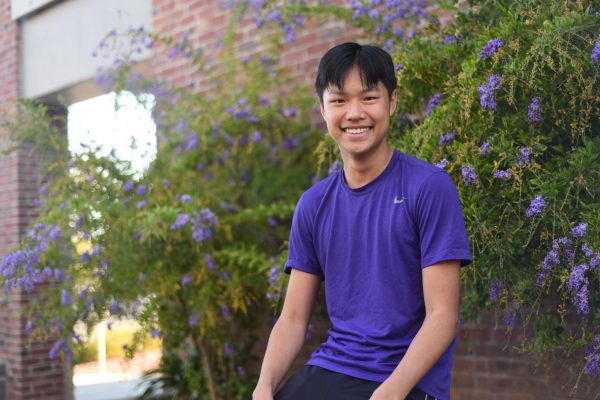MVHS held its annual ShakeOut earthquake preparedness drill shortly after 10 a.m. on Oct. 19, 2023, as part of the international Great ShakeOut Earthquake Drills movement, which aims to educate the world on earthquake preparedness and safety.
Every third Thursday of October, participating schools in the movement’s International ShakeOut Day practice one-minute earthquake drills at minimum, with some scheduling additional activities. Public schools in California are required by law to train both students and staff in earthquake emergency procedures. California has been one of the Great Shakeout movement’s many official regions for over a decade, and with 5.3 million participants, its first ShakeOut drill in 2008 was the largest within the U.S. to date.
Assistant Principal Sydney Fernandez says that although schools are not required to participate in the Great Shakeout, it does provide an opportunity to take care of the training for students and staff.
“We participate because we want to make sure that our whole community feels comfortable and prepared should there be a real earthquake,” Fernandez said. “We are able to participate in [California’s Great ShakeOut] to align with what other agencies are doing, so we choose to do that.”
MVHS alum 23’ and UC Berkeley freshman Kayla Chang says the earthquake drills and science classes she practiced as a student at CUSD and FUHSD provided her with knowledge on how earthquakes work and how to prepare for them. However, she believes it’s only now that she lives in Berkeley, close to the Hayward fault, that she’s started taking earthquakes more seriously.
“[Growing up, earthquake preparedness] definitely wasn’t the drill that was the scariest [or] the most serious to me,” Chang said. “A lot of people [probably] felt the same because everyone would be giggling and just sitting [with] their phones under their desks. It was just a chore. [I’m] definitely more scared now than I was at home.”
Chang says she and her peers are worried the Bay Area is “overdue” for a major earthquake. Despite her fears, she and others around her still rarely prioritize earthquake preparedness. According to Chang, day-to-day concerns and other crises keep earthquakes at the back of people’s minds.
Seismologist Dr. Peggy Hellweg says reminding people to be cognizant about earthquake preparedness and safety is precisely why events such as ShakeOut day are so important. She says earthquakes pose a constant hazard in most areas of California.

Each year, California experiences two or three earthquakes with magnitudes of 5.5 or greater and large enough to cause moderate damage. Within 2023, California has already experienced over 20 earthquakes of magnitude 4.0 or greater, according to USGS’ earthquake catalog. In addition, more than 70% of the state’s population resides within 30 miles of a fault, including MVHS and its surrounding areas.
“The small effort to be prepared is really, really worth a great deal, because then we can go about the rest of our lives,” Hellweg said.
Hellweg, who worked at the UC Berkeley Seismological Laboratory before she retired, also stresses the value of education on these topics.
“Public outreach has always been a big part of what I’ve done,” Hellweg said. “I think one of the great things about the ShakeOut day is that the kids in school learn what to do, and kids are a great multiplayer because they go home and they say, ‘Mom, Dad, have we prepared for an earthquake? Where is our go-bag? What are we going to do if the ground starts shaking?’”
In contrast to Chang’s home in Cupertino, where schools held emergency response drills and her family had emergency kits and plans in place, Chang says she feels relatively unprepared for if an earthquake were to occur at UC Berkeley, primarily due to a lack of communication. Though the school provides instructions both online and in locations such as student dorms, and has a PA system to announce emergencies, Chang believes communication about concrete emergency response plans has been limited.
“A lot of the instruction that we get is for when we’re on our own,” Chang said. “[There can be] hundreds of kids in the lecture hall. We can’t really duck and cover. So it’d be nice to have more information on what to do in that scenario, because I actually couldn’t tell you what we’re supposed to do, other than accept our fate.”

Fernandez stresses the importance of earthquake drills, and states that MVHS staff are trained to carry out evacuations with administrators assigned to each evacuation point in the event of a real earthquake.
“You never know when we will have a real earthquake, and they can be scary,” Fernandez said. “So when you practice, you have a sense of what to do when your emotions might be elevated, or it might be harder for you to know what to do during a real earthquake.”
Hellweg acknowledges that since major earthquakes are fairly rare, people should be careful in finding an appropriate balance between preparedness and fear. She recalls her own children being afraid of sleeping indoors immediately following the 1989 Loma Prieta earthquake, despite very low chances of them being in that kind of danger.
According to Hellweg, who was part of the development of the earthquake early warning system currently in use on the west coast, though advancements in technology and decades of careful observation have greatly improved scientists’ understanding of earthquakes, earthquakes are still largely unpredictable due to lack of sufficient data. However, Hellweg believes that all people can — and should — create their own plans in the case a major earthquake does occur.
“The earthquake early warning system does not supersede the need to be prepared to make sure that your house is ready [and] that you will have a plan of what to do in case the earthquake happens,” Hellweg said. “It’s also very important that part of the Great ShakeOut is to check what your earthquake plans and supplies [are] so that you’re really ready [for] all of those things you can’t do in the three seconds between the early warning and the shaking arriving.”












